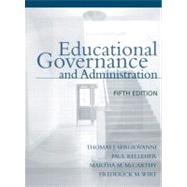
| Preface | ix | ||||
| About the Authors | xiii | ||||
| PART ONE The Context for Schooling in the United States | |||||
|
1 | (20) | |||
|
2 | (2) | |||
|
4 | (1) | |||
|
5 | (1) | |||
|
6 | (5) | |||
|
11 | (2) | |||
|
13 | (2) | |||
|
15 | (1) | |||
|
16 | (1) | |||
|
17 | (1) | |||
|
18 | (1) | |||
|
19 | (2) | |||
|
21 | (34) | |||
|
22 | (1) | |||
|
22 | (5) | |||
|
27 | (2) | |||
|
29 | (3) | |||
|
32 | (5) | |||
|
37 | (4) | |||
|
41 | (2) | |||
|
43 | (3) | |||
|
46 | (6) | |||
|
52 | (3) | |||
| PART TWO Introduction to Educational Administration | |||||
|
55 | (26) | |||
|
56 | (2) | |||
|
58 | (2) | |||
|
60 | (5) | |||
|
65 | (1) | |||
|
66 | (1) | |||
|
66 | (4) | |||
|
70 | (2) | |||
|
72 | (1) | |||
|
73 | (1) | |||
|
74 | (3) | |||
|
77 | (2) | |||
|
79 | (2) | |||
|
81 | (29) | |||
|
81 | (3) | |||
|
84 | (5) | |||
|
89 | (4) | |||
|
93 | (3) | |||
|
96 | (3) | |||
|
99 | (2) | |||
|
101 | (7) | |||
|
108 | (2) | |||
|
110 | (38) | |||
|
110 | (1) | |||
|
111 | (4) | |||
|
115 | (23) | |||
|
138 | (2) | |||
|
140 | (1) | |||
|
141 | (4) | |||
|
145 | (3) | |||
|
148 | (16) | |||
|
148 | (1) | |||
|
149 | (7) | |||
|
156 | (2) | |||
|
158 | (5) | |||
|
163 | (1) | |||
|
164 | (11) | |||
|
164 | (1) | |||
|
165 | (3) | |||
|
168 | (3) | |||
|
171 | (1) | |||
|
172 | (3) | |||
| PART THREE Teachers, Principals, and Superintendents | |||||
|
175 | (16) | |||
|
175 | (5) | |||
|
180 | (3) | |||
|
183 | (7) | |||
|
190 | (1) | |||
|
191 | (20) | |||
|
191 | (2) | |||
|
193 | (2) | |||
|
195 | (4) | |||
|
199 | (4) | |||
|
203 | (1) | |||
|
204 | (4) | |||
|
208 | (1) | |||
|
209 | (2) | |||
|
211 | (18) | |||
|
211 | (2) | |||
|
213 | (4) | |||
|
217 | (1) | |||
|
218 | (4) | |||
|
222 | (1) | |||
|
222 | (4) | |||
|
226 | (1) | |||
|
227 | (2) | |||
| PART FOUR Introduction to Governance in Education | |||||
|
229 | (16) | |||
|
229 | (2) | |||
|
231 | (3) | |||
|
234 | (1) | |||
|
234 | (2) | |||
|
236 | (3) | |||
|
239 | (3) | |||
|
242 | (1) | |||
|
243 | (1) | |||
|
244 | (1) | |||
|
245 | (18) | |||
|
245 | (6) | |||
|
251 | (3) | |||
|
254 | (4) | |||
|
258 | (1) | |||
|
259 | (2) | |||
|
261 | (1) | |||
|
261 | (2) | |||
|
263 | (17) | |||
|
263 | (3) | |||
|
266 | (2) | |||
|
268 | (2) | |||
|
270 | (2) | |||
|
272 | (2) | |||
|
274 | (3) | |||
|
277 | (1) | |||
|
278 | (1) | |||
|
279 | (1) | |||
|
280 | (17) | |||
|
280 | (3) | |||
|
283 | (7) | |||
|
290 | (3) | |||
|
293 | (2) | |||
|
295 | (2) | |||
| PART FIVE Legal and Financial Considerations | |||||
|
297 | (26) | |||
|
297 | (4) | |||
|
301 | (5) | |||
|
306 | (6) | |||
|
312 | (2) | |||
|
314 | (5) | |||
|
319 | (2) | |||
|
321 | (2) | |||
|
323 | (36) | |||
|
323 | (8) | |||
|
331 | (19) | |||
|
350 | (5) | |||
|
355 | (4) | |||
|
359 | (30) | |||
|
359 | (8) | |||
|
367 | (5) | |||
|
372 | (2) | |||
|
374 | (8) | |||
|
382 | (3) | |||
|
385 | (4) | |||
| Index | 389 |
The New copy of this book will include any supplemental materials advertised. Please check the title of the book to determine if it should include any access cards, study guides, lab manuals, CDs, etc.
The Used, Rental and eBook copies of this book are not guaranteed to include any supplemental materials. Typically, only the book itself is included. This is true even if the title states it includes any access cards, study guides, lab manuals, CDs, etc.